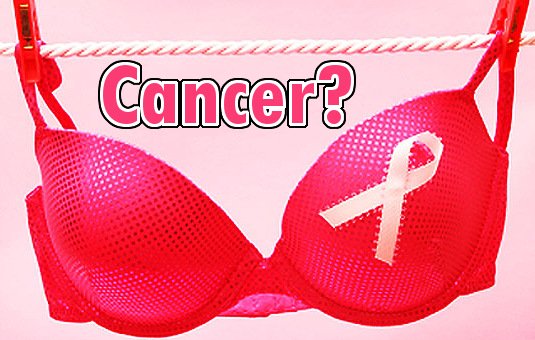Bras and Cancer: Could Bras Support Breast Cancer?

 The birth of feminism in the late 1960s and early 1970s featured young women burning bras as a counterpoint to young men burning their draft cards. In other words, those were statements of women’s independence. Lately, there’s been some discussion as to the medical merits of those demonstrations.
The birth of feminism in the late 1960s and early 1970s featured young women burning bras as a counterpoint to young men burning their draft cards. In other words, those were statements of women’s independence. Lately, there’s been some discussion as to the medical merits of those demonstrations.
Ironically, it was an American woman who invented the bra around the turn of the 20th Century, according to Ken L. Smith, educator and Breast Health Facilitator for the American Cancer Society (ACS). Up until the beginning of the 20th Century, corsets are what made women exhibit that desired hourglass figure and inadvertently pushed up the bust line for fashionable clothing of that time.
Problem was, corsets messed with internal organs while shaping those hourglass figures, and their tightness resulted in women fainting more often then than they do now.
In 1893, Marie Tucek made a “breast supporter” that looked a lot like a modern brassiere. But later Mary Phelps Jacobs designed a better version and called it a brassiere. She patented it and later sold the patent to a company named Warner Brothers Corset Company in Bridgeport, Connecticut for $1,500. Thus the bra was born.
By the 1950s, teenage girls were urged to buy “training bras” to hold their breasts firmly in a desirable way and help prevent future sagging. Even the brassier industry admits that the only time bras prevent sagging is while wearing them.
And Ken Smith offers that using artificial breast support long enough will cause the breasts’ cup shaped suspensory Cooper’s ligaments to atrophy, allowing the breasts to sag over time anyway. Perhaps allowing breasts to move as one moves helps keep those ligaments firm. And there are exercises to help tone those ligaments, while wearing a one piece sports bra temporarily is fine.
Bras and Breast Health
The connection between wearing bras and painful non-malignant breast fibrocystic disease as well as malignant breast cancer was hardly mentioned until the book Dressed to Kill by researchers Sydney Ross Singer and Soma Grismaijer came out in 1995. They surveyed 5,000 women and discovered that women who wore bras for 12 hours or more greatly increased breast cancer risk than women who wore bras less.
Continuing, the connection between breast tumors, non-malignant or malignant, and bras has merit when considering the lymph drainage issues from wearing bras too often. Back to movements, the lymph system, which includes lymph nodes in the breasts, requires body movement to pump out the lymph nodes accumulation of toxic waste materials. That’s what jumping on a rebounder is mostly about.
Not only are breasts’ movements inhibited by bras, inhibiting lymph nodes, but the actual tight enclosures of bras constricts the breasts and won’t let the lymph materials to flow anywhere. If a Florida doctor has observed 90 percent healing from fibrocystic breast disorders upon not wearing bras, and many women have written in with results on their bra abstinence, it follows that wearing bras less or not at all helps prevent breast cancer.
Additional Source:

Never looked back! I agree entirely with this article. Believe this or not, but it was a big truck’s trailer that made me stop wearing a bra about eight years ago. My husband and I were preparing for a trip, and I was doing the pre-trip: checking out the whole truck before leaving. I checked under the trailer, and as I was coming back out, I stood up too soon, and caught my back – and my bra strap – on the edge of the trailer. The resulting scratch caused me to have to discard the bra until it healed. That was about eight years ago, and I never did go back to wearing the awful thing, and have never missed it!
I am now 66 years old, and have no ‘sagging’. Granted, I am not overweight, and I never did wear an enormous ‘suit of armor’-type bra, but I find it is much cooler and more comfortable in our Florida summers with no bra, and nice not to have to mess with putting it on and taking it off. I can highly recommend going bra-less. Try it! After the initial ‘insecurity’ you soon get used to it.